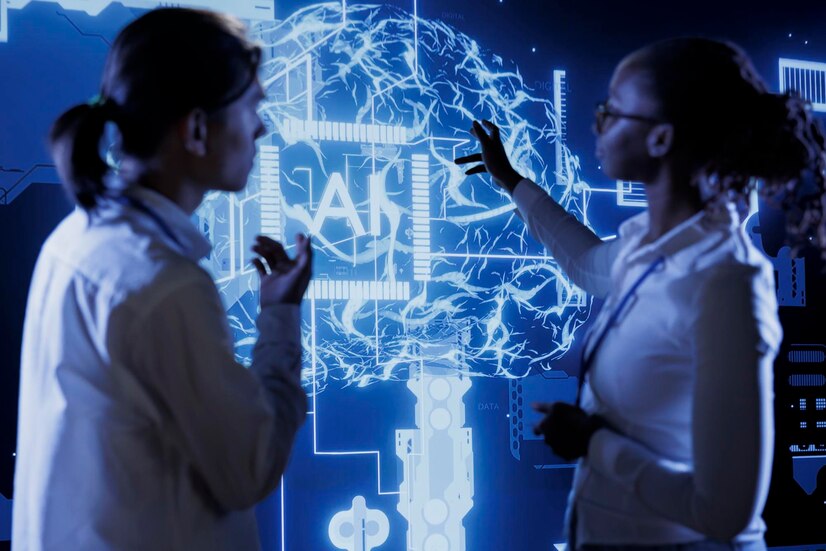Artificial Intelligence (AI) has transformed numerous industries, from healthcare to finance, by enabling machines to perform tasks that typically require human intelligence. Within the vast field of AI, there are several layers of complexity—each representing advancements in the ways machines learn and interpret information. These layers include Machine Learning (ML), Neural Networks (NN), and Deep Learning (DL).
Each of these branches of AI has its own unique techniques and applications, with ML focusing on learning from data patterns, NNs emulating human brain structures, and DL pushing the boundaries with complex multi-layered models. This guide provides a step-by-step breakdown of the AI hierarchy, helping you understand how these technologies build upon each other to create powerful and versatile AI systems.
- Artificial Intelligence (AI)
- Definition: AI refers to machines mimicking human intelligence. It involves systems that can perform tasks requiring human intelligence.
- Key Components:
- Knowledge Representation: Structuring information in ways that allow computers to process and use it, essential for tasks like reasoning and understanding.
- Automated Programming: Allows computers to create code, streamlining complex programming tasks.
- Expert Systems: Rule-based systems that mimic decision-making abilities of a human expert.
- Planning and Scheduling: Automated processes for organizing tasks and optimizing time management, useful in logistics and robotics.
- Intelligent Robotics: Combines AI with robotics for autonomous decision-making in physical environments.
- Visual Perception: Enables machines to interpret visual data (e.g., image recognition in medical diagnostics).
- Speech Recognition: Allows machines to interpret and process spoken language, widely used in virtual assistants.
- Natural Language Processing (NLP): Processes human language to enable conversational AI applications.
- Problem Solving & Search Strategies: Fundamental to AI, focusing on finding solutions in complex scenarios, such as chess algorithms.
- Machine Learning (ML)
- Definition: A subset of AI where systems learn from data patterns without explicit programming.
- Key Techniques:
- Principal Component Analysis (PCA): Reduces the dimensionality of data, making analysis simpler and faster.
- K-Means Clustering: Groups data points into clusters, often used in market segmentation.
- Decision Trees: A model using tree-like structures for decision-making, popular in classification tasks.
- Naïve Bayes Classification: Based on Bayes’ theorem, it is effective for spam filtering and text classification.
- Support Vector Machines (SVM): Separates data into classes with a hyperplane, used in image and text classification.
- Random Forests: An ensemble method using multiple decision trees, effective for reducing overfitting.
- Ensemble Methods: Combines multiple models to improve predictive performance, like bagging and boosting.
- Neural Networks (NN)
- Definition: Modeled after the human brain, neural networks are computing systems composed of interconnected nodes (neurons) that process information.
- Key Types:
- Radial Basis Function Networks (RBF): Used for regression and classification by measuring distance from a center point.
- Autoencoders: Unsupervised learning models that learn efficient data encoding, often used in anomaly detection.
- Self-Organizing Maps: Visualize high-dimensional data in a low-dimensional space, helpful for clustering.
- Multilayer Perceptrons (MLP): Basic type of neural network with layers, commonly used for classification.
- Modular Neural Networks: Networks with multiple subnetworks, each solving parts of a larger problem.
- Deep Learning (DL)
- Definition: A subset of neural networks with multiple layers (deep architecture) that can model complex patterns.
- Key Types:
- Convolutional Neural Networks (CNN): Specialized for processing grid-like data, particularly images (e.g., facial recognition).
- Recurrent Neural Networks (RNN): Ideal for sequential data like time series and text.
- Long Short-Term Memory Networks (LSTM): A type of RNN with memory units, effective in handling long-term dependencies.
- Generative Adversarial Networks (GANs): Two networks (generator and discriminator) compete to create realistic data, used in image synthesis.
- Deep Belief Networks (DBN): Stacked layers of restricted Boltzmann machines, useful in dimensionality reduction.
- Deep Reinforcement Learning: Merges deep learning with reinforcement learning, often applied in game AI and robotics.
AI Hierarchy in Details:
| Level | Description and Key Techniques |
|---|---|
| Artificial Intelligence | Knowledge representation, expert systems, NLP, robotics, problem-solving |
| Machine Learning | PCA, K-Means, decision trees, SVM, random forests, ensemble methods |
| Neural Networks | RBF, autoencoders, SOM, MLP, modular networks |
| Deep Learning | CNN, RNN, LSTM, GANs, DBN, deep reinforcement learning |
Conclusion
AI, ML, Neural Networks, and Deep Learning are part of a connected hierarchy. While AI is the overarching field, ML allows systems to learn from data, neural networks provide structure for complex models, and deep learning enables advanced pattern recognition through layered architectures. Each level offers unique methods and applications, from simple classification to sophisticated generative models. Understanding these distinctions is crucial for leveraging AI effectively across various domains.



